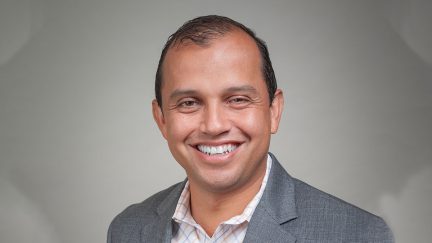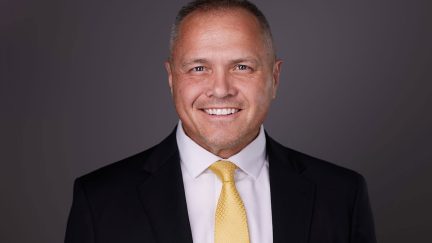Want the latest retirement plan adviser news and insights? Sign up for PLANADVISER newsletters.
4 Habits of Successful Plan Advisers
Plan advisers shared habits that have helped advance and grow their practices during a panel at the NAPA 401(k) Summit.
Running a successful retirement plan advisement business has numerous components, including building a book of business, keeping clients happy and setting the firm up for long-term growth.
A group of plan advisers discussed some of their best practices to reach these goals on Tuesday at the National Association of Plan Advisors 401(k) Summit in Nashville. Topics included finding new clients, keeping existing ones, and the power of focus.
Follow-up
Steve Wilkinson, president, (k)quote, noted that it’s one thing to connect to a client prospect, but he has found the key to moving toward a business relationship is having a process of following up.
“You have to be organized; you have to have a great process,” he said. “When I was cold calling people would say ‘call me two months, call me in three months.’”
Wilkinson had put a system in place to make those follow-ups consistently, which eventually turned them into clients, telling the audience “if you make it a habit to follow-up, that habit will lead to success.”
Karen Casillas, vice president, financial adviser, CAPTRUST Financial Advisors, noted that follow-up isn’t just about prospective clients, but past ones.
“There are a lot of relationships with people you have worked with on a retirement planning committee—whether that’s giving them fiduciary planning, or going through where the plan is, but you’ve built a relationships,” Casillas said. “When these people leave, you can have a follow-up process to continue that relationships, which can lead to business.”
Katie Colon, retirement plan consultant, OneDigital, noted that she takes at least one hour every day on LinkedIn to stay updated on what is happening professionally and personally with clients. Little tidbits about promotions, things they follow, or schools they attended can call lead to “things we can connect on and discuss that makes them want to work with us.”
Empathize
Colon also noted that plan advisers sometimes approach plan sponsors with the idea that the retirement plan is on their mind—often, it isn’t.
“The reality is that retirement often comes last on the list for plan sponsors,” Colon said. “I reach out to start a conversation with them about what they are thinking about.”
Employers, she said, might often be thinking about other areas of their business, such as property and casualty concerns or employee turnover. She said it’s important to first emphasize with those clients on their issues, then consider how retirement might help their situation.
“You can talk to them about how the retirement plan can help reduce the cost of turnover,” she said.
Wilkinson agreed, noting that it’s important to study a business and approach them with issues they may face in their sector.
“The key is just knowing a bit about them and using their language,” he said. “I learned that it’s not about me and what I’m doing but hearing from them and building relationships.”
Colon noted that she regularly meets with former retirement committee members she has worked with for a coffee or lunch, as oftentimes they will share referrals or leads.
Be Part of the Village
CAPTRUST’s Casillas said it’s important for advisers to remember that “it takes a village” to serve plan sponsors.
“It takes recordkeepers and asset management firms and third-party administrators and ERISA attorneys,” she said. “It takes a lot of work and prep to make sure everyone is aligned when working with the client.”
Casillas noted that her team puts a lot of preparation into ensuring all these parties are aligned before meeting with a client so everything appears seamless on their end. It’s also key, she said, to be responsive and proactive when something along that chain breaks down and a mistake is made.
“As much as I’d love to control everything, mistakes are made, so it’s important to be responsive and let the client know what you are doing to find a solution,” she said.
Casillas also noted that, as a plan adviser, it’s important to be connected to the community in which you do business not just through work, but by engaging in community activities and charitable work.
“Do work for a nonprofit or find some way to give back to the community where you are working,” she said. “That will keep you within the networks that are there.”
Focus
One positive habit the panelists all agreed on was the ability to focus on the important tasks in order to move the business forward.
Wilkinson shared a quote he often uses, which is: “he who chases two rabbits, catches neither.”
“There’s so much opportunity that is out there in the world,” Wilkinson said. “When I was a younger adviser I tried to go after everything. But I’ve learned over time to focus, and I find that, actually, the less I’m doing, the more I’m getting done.”
Colon agreed, noting that a trick she uses is tackling the hardest emails or issues at the start of the day. Even if it means just drafting an email she will send later, it will clear the deck for her to do the outreach and meetings that reap benefits for the business overall.
Casillas agreed, saying that it’s important not to “let email overwhelm you; stick to your plan. If you don’t do that, it can derail a whole day. I think everyone here can relate to that.”
You Might Also Like:

2025 Top Retirement Plan Adviser: Alvaro Galvis

2025 Top Retirement Plan Adviser: Erik Daley

